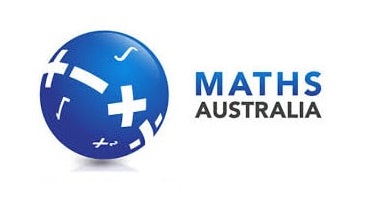
8 Reasons to Choose Specific Maths for Dyslexia
In the area of language and literacy, it is well understood that a student with learning differences must be presented new learning opportunities in a way that is different to traditional textbook based programs. This type of instruction is based on research that identifies that students learn and retain an understanding of a subject when it is taught using all of all five senses: auditory, visual and kinaesthetic. In other words, whatever a student can hear, see, touch and feel, their bodies remember and they can understand.
The same is true when teaching maths. Maths must be taught as a language, with the same approach to using the five sense and working with them at their pace of understanding. By involving the student in their learning process, you have a much better experience of teaching and your student has a much higher chance of learning what you have to teach.
It's an approach that was pioneered by Orton-Gillingham for teaching language, and is now being used throughout maths education with excellent results.
Does a multisensory approach work for those with dyslexia?
The research behind multisensory instruction is even more relevant for students with dyslexia and other learning differences. Most students with dyslexia, dyscalculia and dysgraphia struggle with the abstract concepts of maths. They don't recognise numbers of a page until that number has a sensory experience and a tactile-brain imprint behind it. They need to have something concrete, real and tangible to “tag” to a word, a number, or a squiggle on the page before being able to successfully move to an abstract understanding. Concrete understanding must be taught before abstract concepts.
8 Crucial Questions to Ask
when Choosing a Maths Program
Let’s review the features you should look for in a maths program and the best way to teach a student with dyslexia. By being aware of what you are looking for, you become equipped to make the right decision for your child. This 8-question checklist is perfect for understanding what to look for when deciding on your child's maths program.

1. A mastery-based approach is essential
Does the maths program differentiate each unique student’s current level of maths mastery? This identification of how your student learns is essential to identify where to begin, and which path to follow to ensure mastery and a real understanding of each maths concept presented.
2. Does each concept build on the one before it?
Is there an intense focus on the in-depth treatment and mastery of whole numbers as a foundation prior to teaching rational numbers? In other words, are students given the support, instruction and time to truly understand counting, Place Value, addition, subtraction, multiplication and division of whole numbers before they are expected to begin to understand parts of whole numbers? Does the student understand when, how and why to use maths in each real life context required, rather than relying on rote learning/memorisation of maths facts?
3. Are the lessons taught using an explicit and systematic approach?
Does the program provide a model of proficient problem solving, verbalisation of thought processes, guided practice, corrective feedback and frequent review to ensure that the student is continuing to understand? Are there specific and clear procedures for introducing, practicing and reviewing the concepts? Are these procedures simple for teachers to prepare, to present, and to enable student practice before they progress? Do the teaching tools and sequence of instruction supplied allow for continuity and ease of teacher preparation?
4. Are the maths concepts taught sequentially?
Is there a clear sequence and order of maths instruction? Maths must be taught sequentially as it builds line upon line, precept upon precept on previously learned material. This methodology, along with moving at the student’s pace ensures a student is a confident problem solver who enjoys maths.
5. Does the program follow a multisensory approach?
Is the maths program based on the use of hands-on manipulatives and tactile methods that enable the student to see, touch and feel maths to truly understand it? Are there multisensory manipulatives and integer blocks that enable a student to see, hear, touch and speak maths to reinforce their learning? Are similar materials used to continuously demonstrate a link between whole numbers and rational numbers?

6. Does the maths program support cognitive process?
Cognition is conscious and unconscious, concrete and abstract, as well as intuitive and conceptual. Cognitive processes use existing knowledge and generate new knowledge, enabling a student to progress to gain further understanding. Does your maths program allow for this, and build on existing skills for a student?
7. Are the lessons taught in a clear and direct manner?
Is there a process upon which the student can rely, that is followed for each lesson? Are simple concepts taught directly, in a clear and straightforward manner?
As a teacher navigating teaching maths to a student with learning differences, it is also important to have a clearly laid out, step-by-step approach to teaching each concept. You need to feel confident about what you are teaching and how you can teach it in the best way possible to make sense to your student.
8. Is your student fully supported in their learning?
Does your student experience joy and confidence in their learning of maths? Does this confidence filter into other areas of their lives and ignite their passion for learning, or is there fear, trepidation, anxiety and a general resistance to learning maths?
By asking these crucial questions when choosing a maths program for your students with dyslexia and learning differences, you will set yourself up for success. Your students will engage in their learning, understand the concepts you are teaching and you will be inspired by their “ah-ha” moments! By teaching your students in a hands-on way, you’ll see the importance of using this effective approach to maths education.
Do your students have learning differences? What topics are they struggling with? Leave your comments below
Hope this helps!
The Team at Maths Australia
